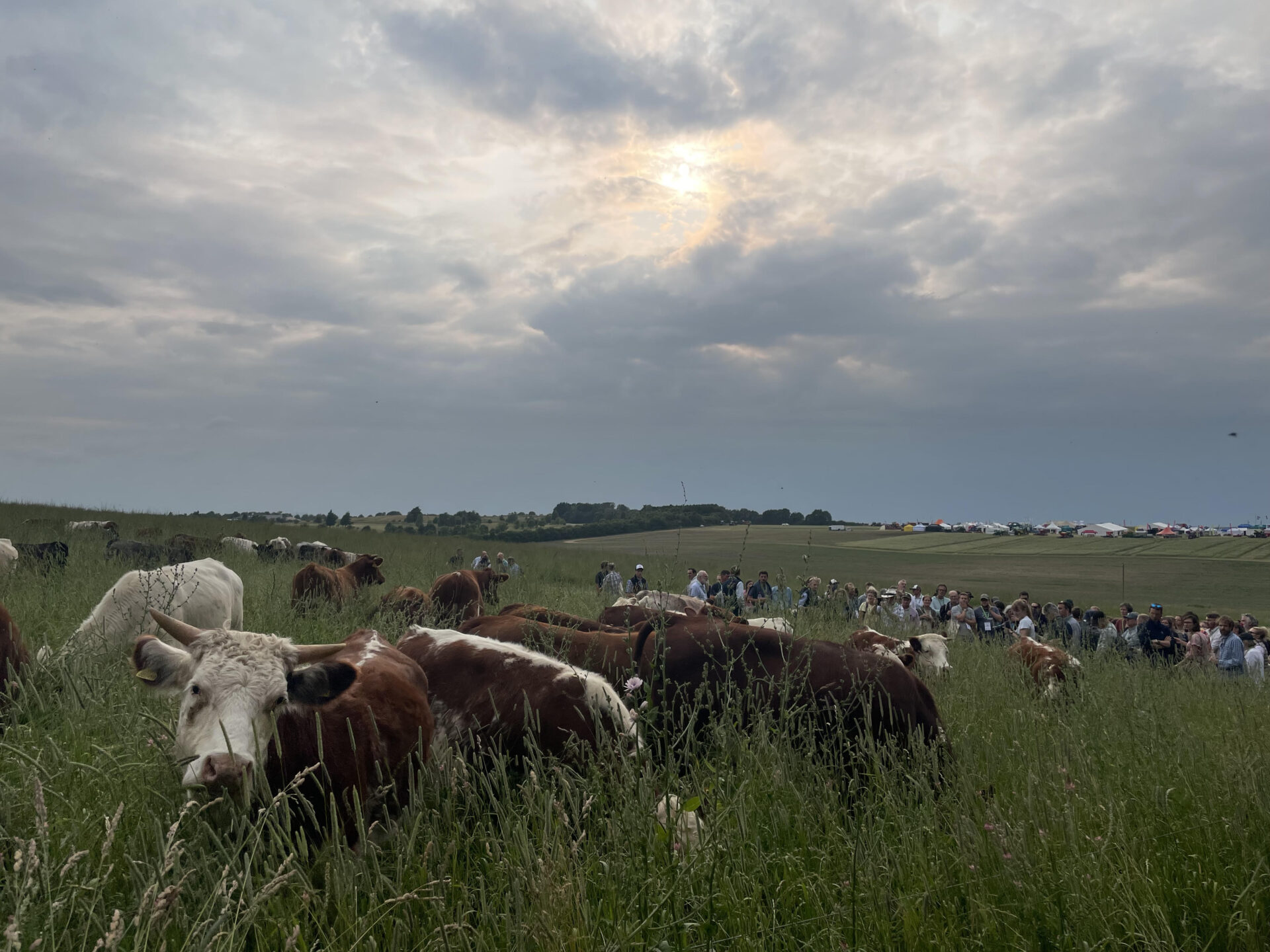Alessia Lenders is head of impact at SLM Partners, a natural asset investor working to scale up sustainable and regenerative farming and forestry.
The views expressed in this article are the author’s own and do not necessarily represent those of AgFunderNews.
Groundswell, fondly known as the “Glastonbury of the farming world,” is a rapidly growing festival for farmers eager to learn about the principles and practices of regenerative agriculture. It centers on the farmers’ core asset – the soil.
But recently the event has been attracting a more diverse audience of players from across the agriculture and food value chain.
For investors like us, events like Groundswell are key to understanding the realities of agricultural practices on the ground and forging relationships with pioneering regenerative farmers.
Here are four key takeaways for investors:
Harvesting opportunities of biodiversity net gain
Biodiversity net gain (BNG) credits were a hot topic, with several sessions focused on helping farmers understand how they can tap into these additional revenue streams. One of the panels, led by experienced farmers, advisors, and legal and financial experts, aimed to demystify the world of BNG, offering insights and practical guidance to integrate BNG into farm businesses.
Discussions emphasized the need for caution when approaching BNG projects; specifically around costs and timing, as early-movers’ experiences have been more difficult than expected. For example, the costs of transitioning an arable system to a biodiversity habitat have been higher than predicted. For farmers seeking to tap into BNG, it is essential to truly understand the costs of shifting land-use and maintaining it over the long term – and using that to set a credit price that works for them.
We have been looking into BNG as an investable area but already have a foothold in the carbon credit market. BNG credits and carbon credits share similarities as they both aim to reward positive environmental outcomes through market-based mechanisms and they can be used as parallel tools in different contexts.
Health is wealth
This year’s Groundswell also saw more content on health and nutrition. There is increasing evidence to back up the theory that healthy soil = healthy plants = healthy people.
The food that we eat, and more specifically, how we grow it, impacts our health. This is why conversations on regenerative agriculture and soil health are now welcoming doctors to the circle.
The relationships between soil health, food nutrient profiles, and human health are still being fully understood – it’s a novel field of research. Yet, there is growing evidence that regenerative agriculture can produce healthier food, with fewer pesticide residues and greater nutrient density, for an ultimately higher quality and tastier product.
With more research and tools available to study the nutritional content and health benefits of food, we can begin to collect data on food quality and compare foods grown in different agricultural, environmental and value chains. This new wealth of information on health considerations has the potential to support larger shifts in consumer behavior, the emergence of higher premiums for higher quality food and help make regenerative agriculture mainstream.
Roots of resilience
Another key topic covered at Groundswell was resilience-building, and its intersections with economics, with one speaker noting that “farmers cannot be thinking green if they are in the red.” This was echoed by the keynote speaker and regen ag pioneer, John Kempf from Advancing Eco Agriculture, who calls for an agronomic approach focused on biology and plant health.
According to Kempf, with whom we’ve collaborated in the past, a focus on plant health can help farmers build resilience to pests and diseases while improving yield and regenerating their soils.
“Healthier plants just simply perform better,” he says. To ensure their plants are healthy, farmers need a better understanding of plant biology and more visibility on the plant’s health status such as understanding which micronutrients are missing. To support farmers in a more data-driven approach to decision-making for plant health optimization, Kempf promotes using science on farms through sap analysis and genomics.
With a good understanding of plant health science, the transition to regenerative agriculture can be economically viable from day one, making it a more compelling investment opportunity.
From the ground up
Martha Lindstad, a rancher on one of the properties in the SLM Livestock Australia Fund, attended Groundswell and noted, “If we’re going to keep farming and feed the world in the future, our food system needs to change in order to look after and improve our soil health. Otherwise, we won’t have healthy food. After attending Groundswell, I have great faith that our soil’s future is in good hands.”
The future is regenerative. See you next year, Groundswell!




